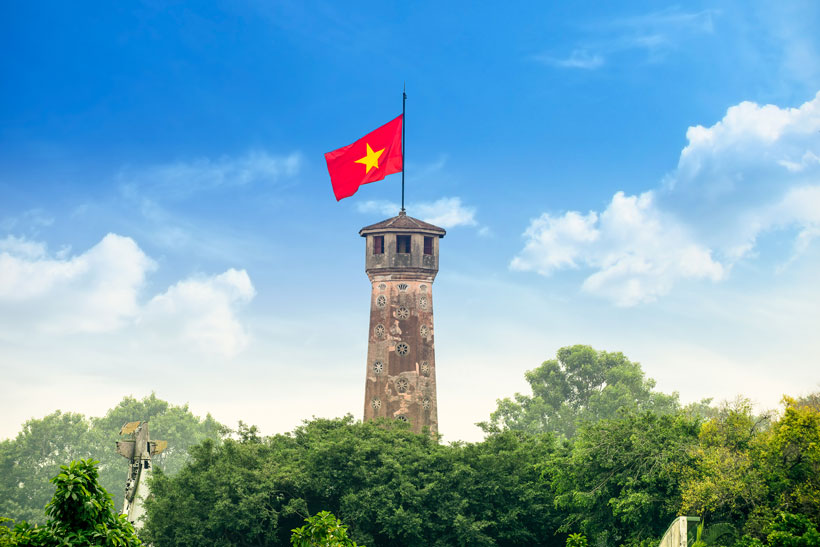If you wake up in the early morning or are wandering in the middle of the city but having no idea about where else to go, let us provide you with a recommended schedule and take you to a brand new place – Imperial Citadel of Thang Long.
Thang Long Imperial Citadel is one of the particularly important architectural works of Vietnam, built in the 11th century and has undergone hundreds of years of history. Now, let’s start our day!
Morning:
Start your day with a delicious breakfast. I suggest having a bowl of Pho or Vermicelli, a special dish of Hanoi and easy to find on the street. Then have a cup of coffee at one of Hanoi’s traditional cafes to wind up your mind, and walk straight to the Imperial Citadel of Thang Long.
Sightseeing:
Here, you can start your tour by entering the gate in 19C Hoang Dieu and buying a ticket. Right in front of you will be the Hanoi Flag Tower, which was built with three floors, the base floors are square in shape, shortened, overlapping, surrounded by brickwork. “Hanoi flagpole” is one of the few architectural works in the area of Hanoi citadel that had the good fortune to escape the destruction carried out by the French colonial government in three years 1894-1897.

From the entrance gate, the first place to visit is the Main Gate (Đoan Môn). The Main Gate is one of the gates leading to the entrance to the Forbidden City (Cấm Thành). Based on the remaining building materials and modern architectural styles of the monument, it can be affirmed that the current Main Gate was built in the Le Dynasty and renovated in the Nguyen Dynasty.
Passing the Main Gate, there is Kính Thiên Palace, the most important palace, where the most solemn ceremonies of the court were held, the place to receive foreign envoys and the place where the court discussed national affairs. Today, this area has become a “dual” relic for both eras: Kinh Thien Palace of the ancient Thang Long Imperial Citadel and the General Command of the Vietnam People’s Army – an important historical monument of Vietnam.
Behind there stands Historical-revolutionary relic of House D67, which is associated with activities of the Politburo, Central Military Commission of the Communist Party of Vietnam, Minister of National Defense, General Staff Vietnam People’s Army since September 1968. D67 Revolutionary House is a basic element of the Headquarters in the resistance war against the US and saving the country.
Coming nearly at the end of the complex is the Lady Pavillon. The building is built of bricks, the bottom is box-shaped, the top is a three-story architecture. The lower floor has three roof floors, the upper floor has two roof floors. The roof is modeled after the traditional Vietnamese architecture of the match roof style, with the ends of the blades, but the entire roof is a brick and concrete structure, on the outside covered with fake tiles.
The North Gate is located on Phan Dinh Phung street, built in 1805, is the only remaining gate of the Hanoi Citadel under the Nguyen Dynasty. Currently, the upper floor of the city gate has been partially restored and is dedicated to worshiping two governors of Hanoi – Nguyen Tri Phuong and Hoang Dieu – who lost their lives because they could not keep the citadel under the attack of the French army.
In the Left side, located in 18 Hoang Dieu, it’s the archaeological excavation area, in which the largest archaeological excavation in Vietnam ever was conducted, since December 2002, with the purpose of preparing to build the new National Assembly house and revealed many rich and diverse relics and relics from which to show us the continuous development of history through the dynasties in Thang Long – Hanoi.
That’s the final site of our special journey today.
When you finish the tour, you can go for lunch at nearby restaurants to enjoy traditional Hanoi dishes such as pho, bun cha, banh mi, and spring rolls. Finally, head back to your place to take a rest because the visiting Thang Long Imperial Citadel must have been a long and tiring one for you but we believe that after going, you will understand a lot more about Vietnam’s history, architecture and even culture.

